+ Open data
Open data
- Basic information
Basic information
| Entry | Database: PDB / ID: 2avh | ||||||||||||||||||
|---|---|---|---|---|---|---|---|---|---|---|---|---|---|---|---|---|---|---|---|
| Title | G4T3G4 dimeric quadruplex structure | ||||||||||||||||||
 Components Components | 5'-D(* Keywords Keywords DNA / quadruplex / loop DNA / quadruplex / loopFunction / homology | : / |  DNA / DNA (> 10) DNA / DNA (> 10) Function and homology information Function and homology informationMethod |  X-RAY DIFFRACTION / X-RAY DIFFRACTION /  SYNCHROTRON / SYNCHROTRON /  MOLECULAR REPLACEMENT / Resolution: 1.5 Å MOLECULAR REPLACEMENT / Resolution: 1.5 Å  Authors AuthorsHazel, P. / Parkinson, G.N. / Neidle, S. |  Citation Citation Journal: J.Am.Chem.Soc. / Year: 2006 Journal: J.Am.Chem.Soc. / Year: 2006Title: Topology variation and loop structural homology in crystal and simulated structures of a bimolecular DNA quadruplex. Authors: Hazel, P. / Parkinson, G.N. / Neidle, S. History |
|
- Structure visualization
Structure visualization
| Structure viewer | Molecule:  Molmil Molmil Jmol/JSmol Jmol/JSmol |
|---|
- Downloads & links
Downloads & links
- Download
Download
| PDBx/mmCIF format |  2avh.cif.gz 2avh.cif.gz | 17.3 KB | Display |  PDBx/mmCIF format PDBx/mmCIF format |
|---|---|---|---|---|
| PDB format |  pdb2avh.ent.gz pdb2avh.ent.gz | 11 KB | Display |  PDB format PDB format |
| PDBx/mmJSON format |  2avh.json.gz 2avh.json.gz | Tree view |  PDBx/mmJSON format PDBx/mmJSON format | |
| Others |  Other downloads Other downloads |
-Validation report
| Arichive directory |  https://data.pdbj.org/pub/pdb/validation_reports/av/2avh https://data.pdbj.org/pub/pdb/validation_reports/av/2avh ftp://data.pdbj.org/pub/pdb/validation_reports/av/2avh ftp://data.pdbj.org/pub/pdb/validation_reports/av/2avh | HTTPS FTP |
|---|
-Related structure data
- Links
Links
- Assembly
Assembly
| Deposited unit | 
| |||||||||
|---|---|---|---|---|---|---|---|---|---|---|
| 1 | 
| |||||||||
| Unit cell |
| |||||||||
| Components on special symmetry positions |
|
- Components
Components
| #1: DNA chain | Mass: 3501.267 Da / Num. of mol.: 1 / Source method: obtained synthetically | ||
|---|---|---|---|
| #2: Chemical | ChemComp-K / #3: Water | ChemComp-HOH / |  Water Water |
-Experimental details
-Experiment
| Experiment | Method:  X-RAY DIFFRACTION / Number of used crystals: 1 X-RAY DIFFRACTION / Number of used crystals: 1 |
|---|
- Sample preparation
Sample preparation
| Crystal | Density Matthews: 1.83 Å3/Da / Density % sol: 32.14 % | ||||||||||||||||||||||||||||||||||||
|---|---|---|---|---|---|---|---|---|---|---|---|---|---|---|---|---|---|---|---|---|---|---|---|---|---|---|---|---|---|---|---|---|---|---|---|---|---|
Crystal grow | Temperature: 284.15 K / Method: vapor diffusion, hanging drop / pH: 6.5 Details: sodium iodide, sodium cacodylate, PEG 400, pH 6.5, VAPOR DIFFUSION, HANGING DROP, temperature 284.15K | ||||||||||||||||||||||||||||||||||||
| Components of the solutions |
|
-Data collection
| Diffraction | Mean temperature: 99 K |
|---|---|
| Diffraction source | Source:  SYNCHROTRON / Site: SYNCHROTRON / Site:  ESRF ESRF  / Beamline: ID14-4 / Wavelength: 0.9792 Å / Beamline: ID14-4 / Wavelength: 0.9792 Å |
| Detector | Type: ADSC QUANTUM 4 / Detector: CCD / Date: Nov 14, 2004 |
| Radiation | Protocol: SINGLE WAVELENGTH / Monochromatic (M) / Laue (L): M / Scattering type: x-ray |
| Radiation wavelength | Wavelength : 0.9792 Å / Relative weight: 1 : 0.9792 Å / Relative weight: 1 |
| Reflection | Resolution: 1.5→25 Å / Num. all: 4066 / Num. obs: 4066 / % possible obs: 99 % / Observed criterion σ(F): 0 / Observed criterion σ(I): 0 / Rmerge(I) obs: 0.054 / Χ2: 1.121 |
| Reflection shell | Resolution: 1.5→1.54 Å / % possible obs: 98.7 % / Num. measured obs: 390 / Χ2: 0.365 / % possible all: 96.127 |
-Phasing
| Phasing MR | Rfactor: 0.645 / Cor.coef. Fo:Fc: 0.232
|
|---|
- Processing
Processing
| Software |
| ||||||||||||||||||||||||||||||||||||||||||||||||||||||||||||||||||||||
|---|---|---|---|---|---|---|---|---|---|---|---|---|---|---|---|---|---|---|---|---|---|---|---|---|---|---|---|---|---|---|---|---|---|---|---|---|---|---|---|---|---|---|---|---|---|---|---|---|---|---|---|---|---|---|---|---|---|---|---|---|---|---|---|---|---|---|---|---|---|---|---|
| Refinement | Method to determine structure : :  MOLECULAR REPLACEMENT MOLECULAR REPLACEMENTStarting model: GGGG(+U)TTGGGG chain A (P21) Resolution: 1.5→23.3 Å / Cor.coef. Fo:Fc: 0.959 / Cor.coef. Fo:Fc free: 0.954 / SU B: 1.752 / SU ML: 0.063 / Cross valid method: THROUGHOUT / σ(F): 0 / ESU R: 0.099 / ESU R Free: 0.087 / Stereochemistry target values: MAXIMUM LIKELIHOOD
| ||||||||||||||||||||||||||||||||||||||||||||||||||||||||||||||||||||||
| Solvent computation | Ion probe radii: 0.8 Å / Shrinkage radii: 0.8 Å / VDW probe radii: 1.2 Å / Solvent model: MASK | ||||||||||||||||||||||||||||||||||||||||||||||||||||||||||||||||||||||
| Displacement parameters | Biso mean: 19.437 Å2
| ||||||||||||||||||||||||||||||||||||||||||||||||||||||||||||||||||||||
| Refinement step | Cycle: LAST / Resolution: 1.5→23.3 Å
| ||||||||||||||||||||||||||||||||||||||||||||||||||||||||||||||||||||||
| Refine LS restraints |
| ||||||||||||||||||||||||||||||||||||||||||||||||||||||||||||||||||||||
| LS refinement shell | Resolution: 1.5→1.54 Å / Total num. of bins used: 20
|
 Movie
Movie Controller
Controller





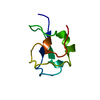
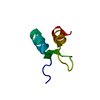
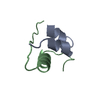

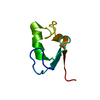
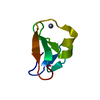
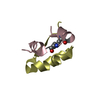
 PDBj
PDBj









































